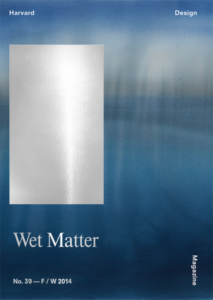Who’s Afraid of the Ocean?
I swim in white-tiled pools with straight black lines; in water where you can see the other side—where there is another side. The walls don’t move; they define and contain my chlorinated monotony. In a messy, unpredictable world, this wet room is soothing. I count, measure, repeat. There are no sharks, no jellyfish, no rip currents.
I’m afraid of the ocean. And maybe I swim the way architects tend to think—in a language of measured perimeters, predefined routes, delimited territories. Again and again, I approach the wall and turn, pushing off from the reliable edge.
“Wet Matter” began as a conversation about a continent. Why, asked Pierre Bélanger, is land always expressed as an absolute shape—a figure situated in the void of “not land”? Why this insistent focus on the dry, when in fact, the wet world with which land lives is itself matter, and the boundaries between the two are dynamic and evolving?
Pierre, I later learned, is an open-water swimmer—one who is interested in challenging the edges, the envelope, that frame our terrestrial orientation. Our issue of _Harvard Design Magazine_ introduces another orientation—a view from the ocean. It requires immersion, and even losing sight of shore.
If we are surrounded by water as swimmers and made of water as humans, why we do we collectively “fight” water’s power? How can we unlearn our binary, dichotomous relationship with the ocean? To let wet matter…
